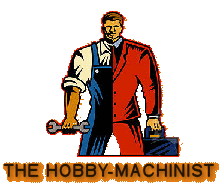- Joined
- Jan 2, 2019
- Messages
- 6,538
Just because you can doesn't mean you should.
How much do you have invested in this machine? Did it belong to your grandfather?
Please post some pictures in this thread and explain why this project is important to you.
You will get plenty of great ideas of how to resolve your problem on this forum but ultimately it comes down to what matters to you.
There are plenty of old lathes out there and many of them will have standard spindles that you can get chucks for. More information is needed here before we can give good advice IMHO.
John
How much do you have invested in this machine? Did it belong to your grandfather?
Please post some pictures in this thread and explain why this project is important to you.
You will get plenty of great ideas of how to resolve your problem on this forum but ultimately it comes down to what matters to you.
There are plenty of old lathes out there and many of them will have standard spindles that you can get chucks for. More information is needed here before we can give good advice IMHO.
John


